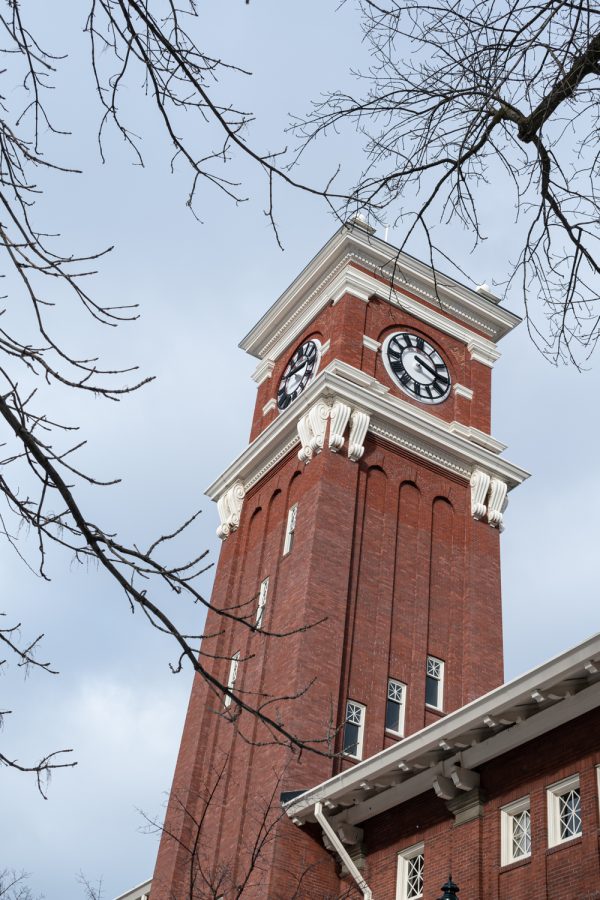El Niño, La Niña responsible for fluctuating Palouse weather
Changes to atmospheric pressures, water density, surface water temperatures are all factors in global climate system
Blue sky peaks through clouds over Bryan Hall. Feb. 24.
February 28, 2022
During the first few weeks of February, the city of Pullman saw warmer temperatures relative to recent years but has been experiencing a recent cold snap. Temperatures were getting around 50 degrees Fahrenheit, and the sun has been perhaps uncharacteristically present this month.
This weather may seem strange to some, but Stephen Katz, a professor in WSU’s School of the Environment, said these warm conditions are not unheard of in the region.
“Yes, it [was] a little warmer, but these are fractional differences we are seeing,” Katz said. “We have had Februarys like this in the past.”
Katz, who studies a range of topics within the environmental field, including local-scale climate variabilities and short-term climate effects, said there could be several reasons for these warmer temperatures on the Palouse.
“There are global-scale climate patterns that we understand,” Katz said, “but local climate conditions have many factors affecting it, so it is hard to say what the specific causes could be [without studies].”
These global-scale climate patterns provide scientists with insight into what factors influence the climate and can even give information as to why certain regional climates are unique relative to adjacent places, he said.
“The Amazon rainforest and the Gobi Desert are where they are because of these global climate patterns,” Katz said.
One of those global patterns that affects Pullman’s weather is La Niña and El Niño cycles, Katz said.
El Niño and La Niña cycles are the warm and cool phases, respectively, of the climate pattern that take place across the tropical Pacific called the El Niño-Southern Oscillation, or ENSO.
In a neutral state of conditions, low pressures are present over Southeast Asia, and high pressures are present around South America with trade winds blowing westward toward Southeast Asia carrying oceanic surface water with it, Katz said.
During an El Niño cycle, these trade winds get weaker and break down. When they break down enough, they eventually start to move eastward and allow warm oceanic surface water around the equator to move back toward South America. El Niños reflect the low-to-high pressure gradients from Southeast Asia to South America, Katz said.
However, during a La Niña cycle, trade winds move back to their original westward direction toward Southeast Asia and allow for cool water to rise in its place. These conditions can cause the Pacific Northwest to have cooler and wetter conditions, especially during the winter months of December through February, much like the conditions the Pullman area experienced at the beginning of January. The North Pacific is currently transitioning from a La Niña to a neutral state, Katz said.
“These global climate patterns can vary on extremely long timescales that are often-times longer than humans can collect data for,” Katz said. “When you consider all the sources of variability, it becomes a hard task to identify specific causes to marginal temperature changes.”
Changes to atmospheric pressures, water density and surface water temperatures are all factors in this complex global climate system that could give insight about the changes in weather that have been happening, he said.
“What may seem like small changes to these global systems can affect things we see in our everyday lives,” Katz said, “like the more than normal precipitation we got in November and December and the warmer weather we are seeing now.”





















